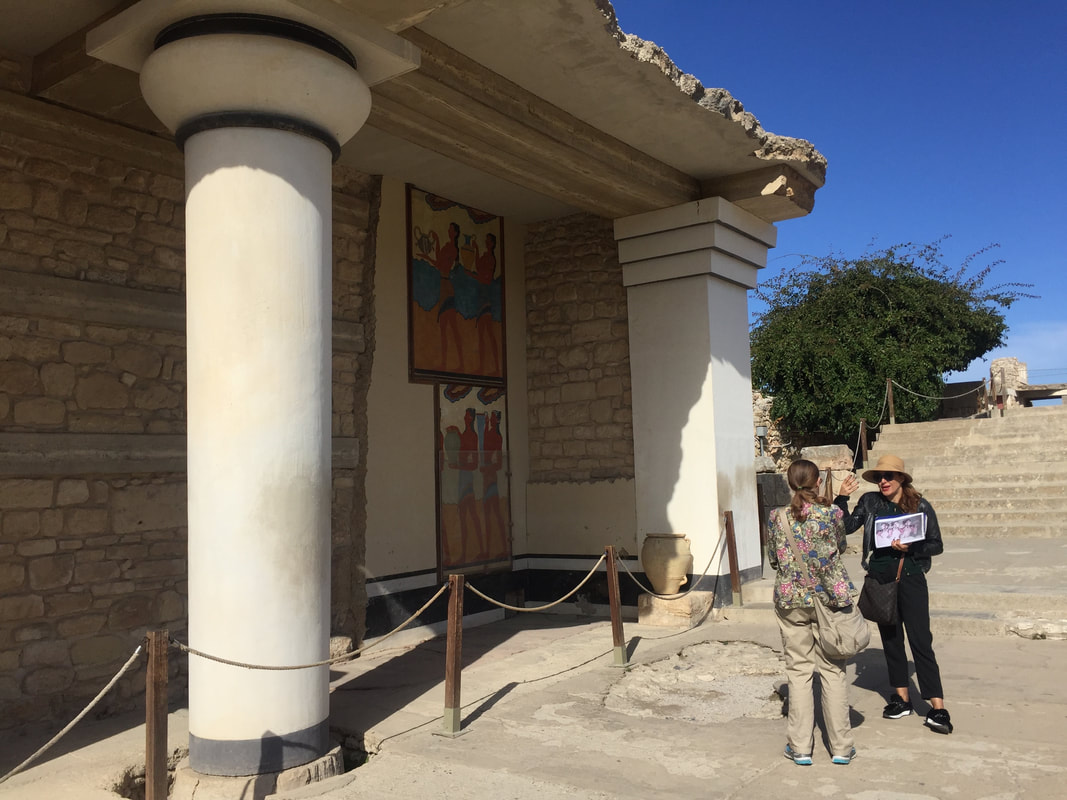|
The labyrinthine Bronze Age palace of Knossos, on Crete, was the oldest site on our recent travels. Knossos was the center of the powerful Minoan civilization before the rise of the Greeks. Minoans traded throughout the eastern Mediterranean.
Here, according to legend, the Athenian prince Theseus slew the half-man-half-bull Minotaur and followed a thread out of the Labyrinth to escape the Minotaur’s father, King Minos. I came to Crete curious whether the myth dates from Minoan times or the later rise of Athens. That turned out to be the wrong question. My first exposure to Greek mythology was flat: twelve Olympians, unchanging except within a particular myth. Later, feminist spirituality drew attention to the Minoan Great Goddess or Earth Mother, often shown holding snakes. Now we had two flat steps: Minoan matriarchy, displaced by the Olympic pantheon of the patriarchal Greeks. Our knowledgeable guide at Knossos explained that the origin of the Theseus story can’t be approached as either/or. Homer and Hesiod in the 700s BCE combined elements from various times and places to create a unified narrative. Minoan art shows acrobats doing backflips over a bull. Minos was a position title, not an individual. Athenian princes came later. Meanwhile, aspects of the Earth Mother evolved into distinct deities such as Artemis for wild animals and Poseidon for earthquakes. Gradually gods from other sources joined the Greek pantheon in a mythology that was anything but flat.
2 Comments
|
AuthorI'm a historian who writes novels and literary nonfiction. My home base is Madison, Wisconsin. Archives
July 2024
|

 RSS Feed
RSS Feed